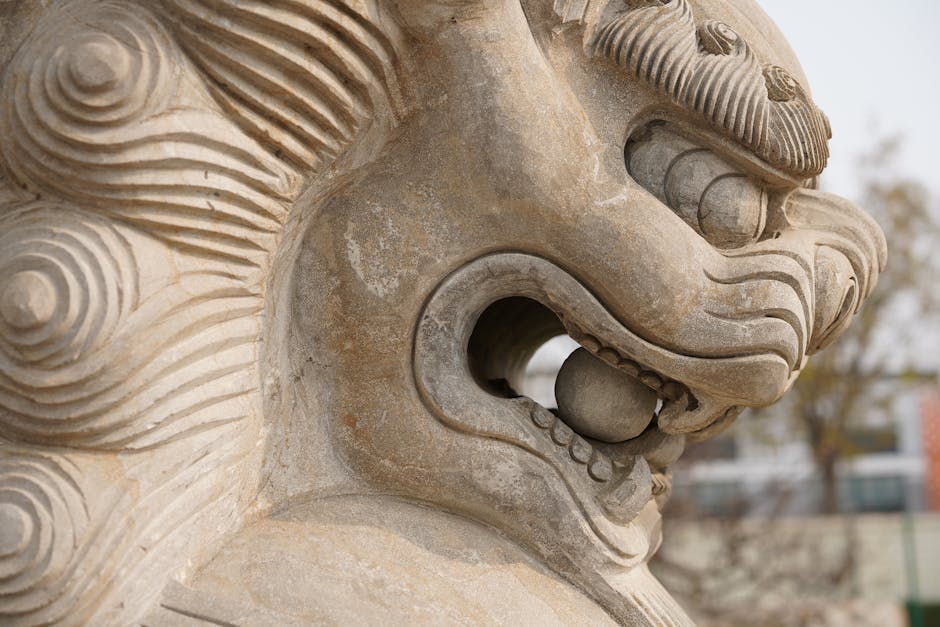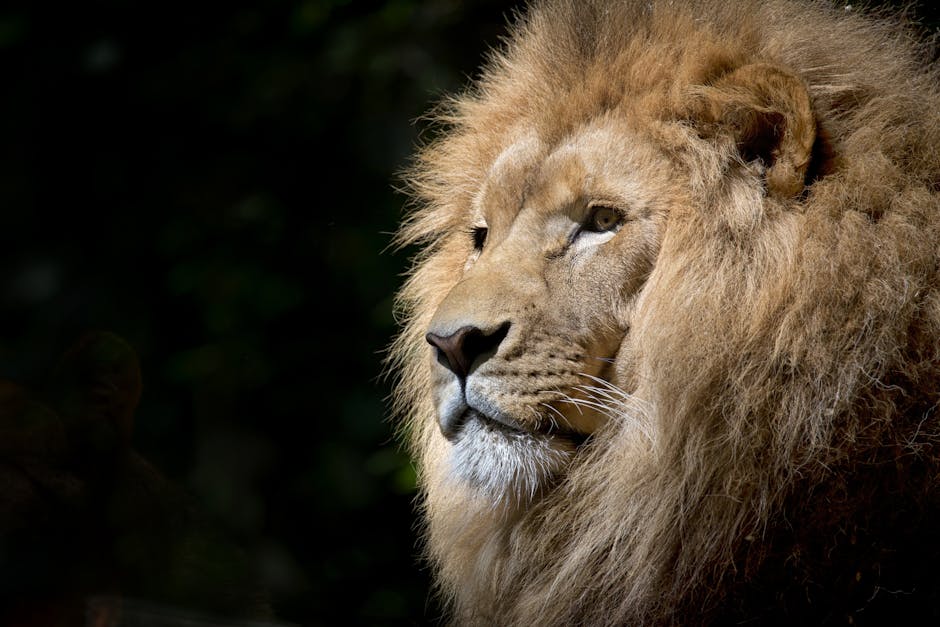Let’s dive into the world of yoga and meditation, specifically focusing on a powerful breathing technique known as Lion’s Breath. This ancient practice, also known as Simhasana in Sanskrit, is a unique method of breathing that involves a forceful exhalation, mimicking the roar of a lion. It’s not just a fun exercise, but it also holds a significant place in yoga and meditation practices. Meditation and yoga are known for their calming and rejuvenating effects, and incorporating Lion’s Breath can enhance these benefits even further. #LionsBreath
Practicing Lion’s Breath can help you tap into your inner strength and power, much like the majestic lion it’s named after. It’s a potent tool for releasing stress and tension, promoting relaxation, and improving overall well-being. But it’s not just about the physical benefits. Lion’s Breath also has profound psychological and emotional effects, making it a holistic practice for mind, body, and spirit. #StrengthWithin
So, why is Lion’s Breath so important in yoga and meditation? Well, it’s all about energy, or Prana, as it’s known in yoga philosophy. Lion’s Breath helps to clear blockages in the energy channels, promoting a smooth flow of Prana throughout the body. This can lead to increased vitality, improved health, and a deeper sense of peace and tranquility. So, let’s roar like a lion and unleash our inner power! #RoarLikeALion
| Benefits of Lion’s Breath |
|---|
| Stress relief and relaxation |
| Strengthening of facial muscles |
| Improved focus and concentration |
| Release of pent-up emotions |
One of the most significant benefits of Lion’s Breath is its ability to provide stress relief and promote relaxation. In our fast-paced world, stress and anxiety are common issues. Lion’s Breath can be a powerful tool in your arsenal to combat these challenges. By focusing on your breath and releasing it forcefully, you can let go of stress and tension, promoting a sense of calm and relaxation. This can be particularly helpful for those dealing with panic attacks or anxiety. #BreatheDeeply
Another benefit of Lion’s Breath is the strengthening of facial muscles. The technique involves a specific facial expression, where you open your mouth wide, stick out your tongue, and roar like a lion. This can help to tone and strengthen your facial muscles, promoting a youthful appearance. So, not only does Lion’s Breath help you feel good, but it can also help you look good too!
Additionally, Lion’s Breath can help improve focus and concentration. The act of focusing on your breath and coordinating it with the lion-like roar requires concentration and mindfulness. This can help to improve your overall focus and concentration, not just during your yoga or meditation practice, but in your daily life as well. It’s a great technique for those dealing with Attention Deficit Hyperactivity Disorder (ADHD).
Finally, Lion’s Breath can help with the release of pent-up emotions. The forceful exhalation can act as a physical manifestation of letting go of negative emotions or stress. This can be particularly beneficial for those dealing with grief or loss, and can be a helpful tool in coping with grief and loss.
| How to Practice Lion’s Breath |
|---|
| Step-by-step instructions on the technique |
| Tips for beginners |
| Modifications for different levels of flexibility |
Now that we’ve covered the benefits of Lion’s Breath, let’s look at how to practice it. Here are some step-by-step instructions:
- Sit comfortably with your spine straight. You can sit on a yoga mat, on a chair, or anywhere you feel comfortable.
- Take a deep breath in through your nose.
- As you exhale, open your mouth wide, stick out your tongue, and make a “ha” sound, as if you’re roaring like a lion.
- Repeat this process for a few minutes, or as long as you feel comfortable.
For beginners, it’s important to start slowly and not push yourself too hard. It’s more important to focus on the quality of your breath rather than the quantity. Also, remember to maintain a sense of fun and playfulness while practicing Lion’s Breath. After all, you’re roaring like a lion!
For those with different levels of flexibility, there are modifications you can make to the practice. For example, if sitting on the floor is uncomfortable, you can sit on a chair. The most important thing is to find a position where you can sit comfortably and maintain a straight spine.
| Variations of Lion’s Breath |
|---|
| Lion’s Roar: Adding vocalization to the breath |
| Lion’s Pose: Incorporating Lion’s Breath into a yoga asana |
| Lion’s Breath in Pranayama: Combining Lion’s Breath with breath control techniques |
Once you’re comfortable with the basic Lion’s Breath technique, you can start to explore some variations. One such variation is the Lion’s Roar, where you add a vocalization to the breath. This can help to further release tension and stress, and can be a fun way to express yourself!
Another variation is the Lion’s Pose, where you incorporate Lion’s Breath into a yoga asana or pose. This can help to enhance the physical benefits of the practice, such as strengthening the facial muscles and improving flexibility.
Finally, you can combine Lion’s Breath with other breath control techniques in Pranayama, the yogic practice of breath control. This can help to further enhance the benefits of Lion’s Breath, such as stress relief and improved focus and concentration.
| Precautions and Contraindications |
|---|
| When to avoid practicing Lion’s Breath |
| Modifications for individuals with neck or jaw issues |
| Consulting a healthcare professional if necessary |
While Lion’s Breath is generally safe for most people, there are some situations where it’s best to avoid this practice. For example, if you have a respiratory condition such as asthma or COPD, Lion’s Breath may not be suitable for you. Similarly, if you have a heart condition, high blood pressure, or are pregnant, it’s best to consult with a healthcare professional before starting any new breathing practice.
If you have neck or jaw issues, you may need to modify the practice to avoid strain or discomfort. For example, you can soften the intensity of the roar, or avoid extending the neck too much. Again, it’s always best to listen to your body and adjust the practice to suit your individual needs.
Finally, if you’re unsure about whether Lion’s Breath is right for you, it’s always a good idea to consult with a healthcare professional. They can provide guidance based on your specific health situation and needs.
In conclusion, Lion’s Breath is a powerful and transformative breathing technique that can provide numerous benefits, from stress relief and relaxation, to strengthening of facial muscles, improved focus and concentration, and release of pent-up emotions. It’s a practice that can be incorporated into your daily routine, whether as part of your yoga or meditation practice, or as a standalone technique for stress relief and relaxation.
Whether you’re a seasoned yogi or a beginner, I encourage you to give Lion’s Breath a try. It’s a simple yet powerful technique that can help you tap into your inner strength and power, much like the majestic lion it’s named after. So, why not give it a go? Roar like a lion, breathe deeply, and unleash your inner power! #MajesticBeasts
Remember, the journey of yoga and meditation is a personal one. It’s not about achieving perfection, but about exploring your own body, mind, and spirit, and discovering what works best for you. So, keep an open mind, stay curious, and enjoy the journey. #WildAndFree

Photo by Serg Alesenko on Pexels





